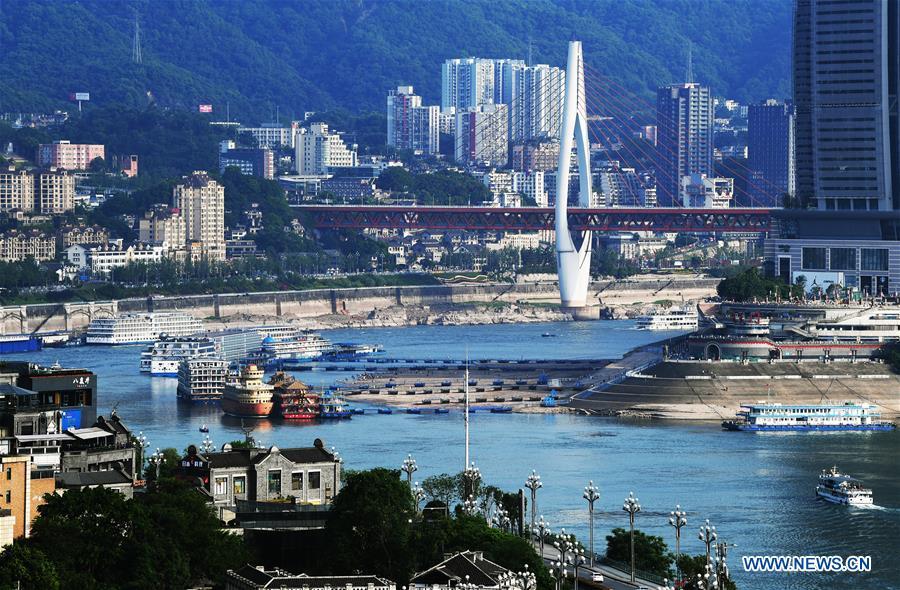CHONGQING, Oct. 29 (Xinhua) -- Every morning early, a freight train loaded with electronic information products, auto parts, and other goods departs the Tuanjiecun station of southwest China's Chongqing Municipality and heads for Germany.
Around the same time, a train full of cargo heads for Poland from more than 300 km away in Chengdu, capital of the southwestern Sichuan Province.
Launched in Chongqing and Chengdu in 2011 and 2013, respectively, the China-Europe freight train services have significantly shortened the distance between western China and Europe.
So far, more than 10,000 freight trains have linked the two cities with Europe, accounting for more than 40 percent of the total number of China-Europe trains in China.
Located in southwest China, the Chengdu-Chongqing area, with Chengdu and Chongqing as the core, has a population of about 120 million and an economic aggregate of nearly 7 trillion yuan (1.04 trillion U.S. dollars).
On Oct. 16, Chinese authorities reviewed a plan that aims to turn the Chengdu-Chongqing area into a crucial driver of the country's high-quality development.
Statistics show that China's three major economic circles use about 2.8 percent of the country's land to support about 18 percent of China's total population. The economic circles of Beijing-Tianjin-Hebei, the Yangtze River Delta, and Guangdong-Hong Kong-Macao contribute about 38 percent of the country's GDP.
"The aim of proposing the Chengdu-Chongqing economic circle is to cultivate another economic engine," said Yao Shujie, deputy director of the Faculty of Social Sciences of Chongqing University.
For many years authorities have explored the synergetic development of the Chengdu-Chongqing area. For example, in 2015, the Chengdu-Chongqing High-Speed Railway began operation, with a commuting time of about 1.5 hours.
Now, relying on the international logistics channels, the Chengdu-Chongqing area has changed from a hinterland into a frontier of opening-up.
During the first three quarters of this year, China's exports and imports grew by 0.7 percent year on year, while those of Chongqing and Sichuan rose by 11.4 percent and 22.7 percent, respectively.
During the COVID-19 epidemic, despite the obstruction of global shipping and air transport, the China-Europe freight train services played an important role in the transportation of international goods and relief supplies, maintaining the stability of the global industrial and supply chains.
In addition to the China-Europe freight trains, Chengdu and Chongqing were also major initiators of an international land-sea passage, which has become the fastest way for China's western region to reach the sea and has expanded to 240 ports in 94 countries and regions.
"The Chengdu-Chongqing area has become a window of China's opening-up to Eurasia," said Li Jing, vice president of Chongqing Technology and Business University.
For a long time, the development of China's eastern and western regions has been uneven. "The Chengdu-Chongqing economic circle will promote the development of the western region," said Yao.
The economic aggregate of the Chengdu-Chongqing area accounts for 33.25 percent in China's western region. Despite the impact of COVID-19, the Chengdu-Chongqing area has led the country in economic growth.
As an electronic information industry base, the area has become a world-class industrial cluster with its strong production capacity.
"As a leader in the development of western China with convenient transportation, the Chengdu-Chongqing area is capable of undertaking industrial transfers from coastal areas, thus stimulating the potential of domestic demand in western China," said Yao. Enditem




 A single purchase
A single purchase









